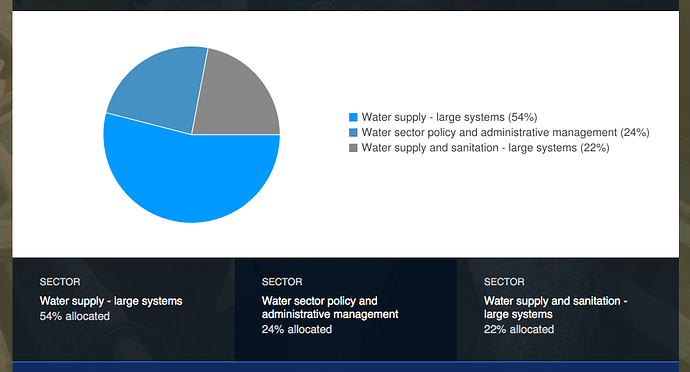Hi Fiona!
Sorry it’s taken so long to get back on this one. I’m aware the someone from the technical team offering an answer for this gives far less insight than someone from the kind of CSO you mention, but I have a couple of thoughts on this.
The most immediate example I can think of is budget analysis that can lead on to more strategic decisions about where to submit grants and proposals. So if an organisation were looking for grants in the water and sanitation in a given country, Angola for example, they could potentially make some quite useful decisions on how to apply to by speculatively looking at the sector breakdown for that country, to compare the amount budgeted with funds already allocated for that year.
For instance, a brief look at the D-Portal sector breakdown for Angola shows that for 2016 there is $637,780 already commited/disbursed/expended in WASH projects for Angola, but 2016’s budget is $47,556,334. Of course, this doesn’t mean that there is definitely funding available, but it could offer a guide on whether there are promising prospects.
They could also drill down on the 2016 budget and find the activities with sizeable budgets for WASH in Angola, which (currently) shows these results:
Num Project title Amount
------ ------------------------------------------------------------------------------------- ---------------
1. AO-Water Sector Institutional Dvlp Reported by The World Bank 33,883,505USD
2. Angola - Institutional Support for the Sustainability of Urban Water Supply 11,066,647USD
and Sanitation Service Delivery Project Reported by African Development Bank
3. Execução das obras o Centro de Formação de Profissional para o Sector das águas 1,138,157USD
Reported by European Commission - Development and Cooperation-EuropeAid
4. By 2019, the Government of Angola has the CLTS National Strategic Plan, and 456,000USD
local governments imple Reported by United Nations Children's Fund (UNICEF)
The top project listed on D-Portal is AO-Water Sector Institutional Dvlp from the World Bank, for which you can see proportion of funds allocated for each of the sub-sectors which, again, could be quite useful:
This is one of many potential benefits, though it really drives home the need for timely, comprehensive, and forward-looking data - this kind of exercise is much harder when there’s a significant time-lag in how up-to-date the data is, or if there is only historical data!
I’d be really interested to hear other people’s thoughts on this!
Rory

